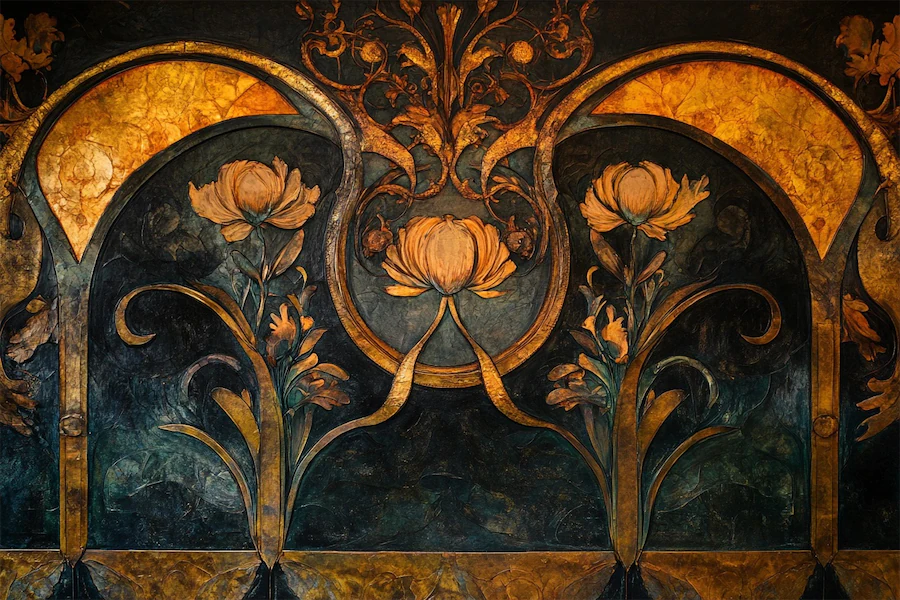Art Nouveau, translating to “New Art,” emerged in the late 19th century as a decorative arts movement that sought to break away from traditional design norms. Characterized by its emphasis on organic forms, flowing lines, and intricate details, Art Nouveau aimed to harmonize art with nature, creating unified and aesthetically pleasing environments.
History and Origins of Art Nouveau Wall Design
The Art Nouveau movement developed as a reaction against the academic art and industrial mass production of the 19th century. It flourished between approximately 1890 and 1910 across Europe and the United States, influencing various art forms, including architecture, interior design, and decorative arts. Pioneers like Victor Horta and Hector Guimard integrated Art Nouveau principles into architectural elements, notably wall designs, to create cohesive and immersive spaces.
Key Features of Art Nouveau Wall Design
Art Nouveau wall designs are distinguished by several hallmark features:
- Organic Motifs: Walls often feature stylized representations of natural elements such as flowers, vines, and insects, reflecting the movement’s inspiration from nature.
- Flowing Lines: Known as “whiplash” curves, these sinuous lines create a sense of movement and dynamism, contributing to the overall fluid aesthetic.
- Intricate Patterns: Detailed and elaborate patterns, including floral and botanical designs, are commonly employed to add depth and visual interest to wall surfaces.
- Stained Glass and Sgraffito: Incorporation of stained glass panels and sgraffito techniques adds color and texture, enhancing the decorative quality of walls.
Applications of Art Nouveau Wall Design
Art Nouveau wall designs can be applied in various settings to evoke elegance and harmony:
- Residential Interiors: Incorporating Art Nouveau elements such as decorative wallpapers with natural motifs or stained glass panels can create a cohesive and artistic ambiance in living spaces.
- Public and Commercial Buildings: Landmarks like the Hôtel Tassel in Brussels showcase the application of Art Nouveau wall designs in architecture, where walls become canvases for artistic expression, contributing to the building’s overall aesthetic.
Considerations When Choosing Art Nouveau Wall Treatments
When selecting Art Nouveau-inspired wall treatments, consider the following:
- Authenticity: Researching original Art Nouveau designs ensures a faithful representation of the style, maintaining historical accuracy.
- Material Quality: Utilizing high-quality materials, such as handcrafted stained glass or detailed wallpapers, enhances the visual appeal and longevity of the design.
- Color Palette: Art Nouveau favors soft, muted tones inspired by nature, including shades of green, brown, and lilac, contributing to a harmonious and calming environment.
Conclusion
Art Nouveau wall design offers a timeless approach to interior decoration, emphasizing the beauty of natural forms and intricate details. By understanding its historical context and key features, one can thoughtfully incorporate this style to create spaces that are both elegant and reflective of the natural world.
